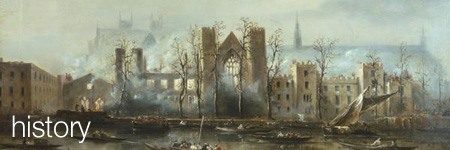
Shoe Lane
City, 128, Fleet Street (EC4) Opposite the entrance to Shoe Lane formerly stood one of the conduits that supplied London with water before Sir Hugh Myddelton conceived the gigantic plan for which posterity is so much indebted to him. The water was conveyed in leaden pipes from Tyburn, and the conduit or head at Shoe Lane was finished in 1471. In the triumphal progress of Queen Anne Boleyn through the City of London on her way to Westminster to be crowned, pageants, as they were called, of various kinds were set up at all the conduits on her way. The conduit at Shoe Lane, Stow informs us, was newly painted, and all the angels had their faces washed, and were made to look decent and becoming on the august occasion. "In the midst of the tower," says Stow, "was such several solemn instruments, that it seemed to be an heavenly noise, and was much regarded and praised, and besides this, the conduit ran wine, claret and white, all the afternoon; so she with all her company and the mayor, rode forth to Temple Bar, which was newly painted and repaired, where stood also divers singing men and children, till she came to Westminster Hall, which was richly hanged with cloth of arras." Shoe Lane abounds in reminiscences which are worth recalling, and will repay the visit of the contemplative man. In the time of Henry V, Edmund, son of Sir Robert Ferrars de Chartley, held eight cottages in Shoe Lane. The only respectable house in the district was the town residence of the Bishop of Bangor, which existed here so early as 1378. (Reference: Smith's Streets of London, p. 265)